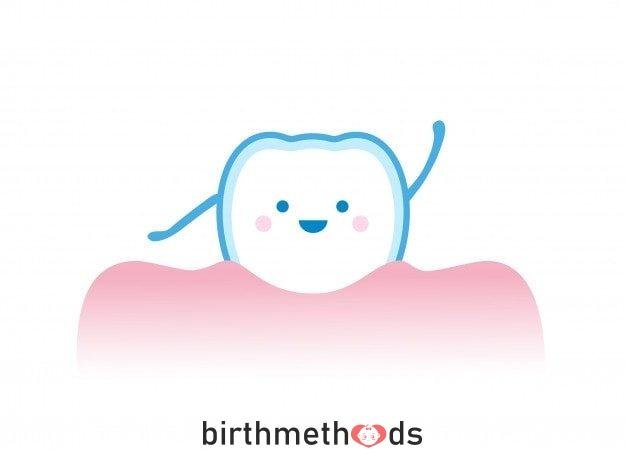Abdominal Pain in Babies
Although abdominal pain in children is often caused by colic or constipation, it sometimes indicates serious health problems. Young children and infants cannot describe pain, so diagnosis can take a long time. Chronic stomach and abdominal pain can be a symptom of serious health problems.
Children of any age can experience abdominal pain. While abdominal pain is usually caused by more conditions such as colic or constipation, it can sometimes indicate serious health problems. Parents should be careful and aware of this, as babies and young children cannot describe the pain and space they experience.
How to See Abdominal Pain in Babies
Abdominal pain in children is often frightening and distressing for parents. Finding the exact cause of a baby’s stomachache is often difficult. Pain is usually not severe without other symptoms that disappear completely in less than 3 hours.
Among the most common causes of abdominal pain in children; gastrointestinal infections, chronic constipation, parasites. Disorders that children describe as abdominal pain; It can also be caused by problems with the kidneys, bladder, or urinary tract. The pain caused by such internal diseases is not immediate, but more chronic.
Chronic Abdominal Pain May Last For Long
Intermittent abdominal pain occurs in 1 out of 4 babies. Abdominal pain seen in 3% of children under the age of two increases to 5% in the 5-7 age group and to 5% in the 8-12 age group. An important symptom is chronic abdominal pain, which is common in childhood. Diagnosis of the disease is very difficult for the family and the child’s doctor. The reason is that children cannot describe the pain. Sometimes more than one treatment and interventional tests are done to diagnose chronic conditions related to abdominal pain. The pain usually lasts more than 1 or 2 months and is called “chronic abdominal pain”.
Understanding the Cause of Pain
Pain is tested in two groups, organic or functional, to find the cause of chronic or recurrent abdominal pain. Organic abdominal pain is caused by a structural, biochemical or physiological disorder. Functional abdominal pain cannot be explained by structural and biochemical disturbances. In general, while the child’s growth and development is normal, there are no bothersome symptoms such as gastrointestinal bleeding, night waking pain, arthritis (inflammation), fever, and involuntary weight loss. Irritable bowel syndrome (IBS), abdominal migraine, and functional dyspepsia can cause this type of abdominal pain.
Recommendation: Gas Pain in Babies
Viral Infections
The most common cause of abdominal pain is gastroenteritis caused by a bacterial or viral infection. This type of pain occurs in -45 of college-aged children. Although the source of functional abdominal pain is unknown, normal bowel movements are perceived as pain in this group of children. In addition, it was determined that these patients changed the digestion in the gut, and psychological problems such as stress and anxiety further disrupted the metabolism and worsened the ailments.
Abdominal pain in children can be a sign of serious health problems. Therefore, parents have important responsibilities. This can facilitate the diagnostic process if parents closely monitor their child’s condition. Abdominal pain in children can have many causes.
- Rotavirus, which spreads during the winter months, affects many children and causes abdominal pain.
- Food poisoning is manifested by vomiting, and the child loses salt and water due to excessive diarrhea.
- Urinary tract infections It is manifested by burning the urine in uncircumcised boys and girls. Abdominal pain is common.
- Constipation causes pain in the lower left abdomen. Pain displacement is an important symptom.
- You can see intestinal nodes even in infants. Babies sleeping with abdominal pain should be taken to a health facility without delay.
- Girls with appendicitis may experience abdominal pain due to the presence of ovaries in the abdominal cavity.
Parents Must Observe
The most common cause of abdominal pain in children is gastroenteritis caused by a bacterial or viral infection called ‘gastroenteritis’. Gastroenteritis, the most common symptom of which is diarrhea, can be confused with diseases that require surgery. Difficulties may be experienced in diagnosis and treatment, especially before the onset of diarrhea. The child has gastroenteritis with abdominal pain, no diarrhea, or may have gastroenteritis involving the intestines. The doctor can only distinguish between these two conditions. In such cases, which are very similar to those that require emergency surgery, parents should carefully monitor the content, smell and color of diarrhea and inform their doctor.
What is Constipation After Diarrhea?
While diarrhea does not go away, it can be a symptom of serious medical conditions such as sudden changes in discomfort and intestinal knots. Symptoms such as gas and inability to defecate, abdominal gas, vomiting can be signs of the intestinal node. However, if you experience vomiting or rectal bleeding along with abdominal pain, consult a specialist immediately. It should be kept in mind that one out of three children who apply to the doctor with stomach pain complains of constipation. Constipation problem in the early stages of life has surgical causes.
What Is Good For Abdominal Pain In Babies?
- Consuming ginger tea is good for stomach problems. Ginger tea has analgesic and cramp-relieving properties.
- If stomach pain caused by cold is predicted, keeping the feet warm will reduce the pain. A hot water bag is useful for this.
- Honey is a safe laxative that speeds up bowel movements. By drinking water with honey, you prevent stomachache caused by your baby’s digestive problems.
- Molasses contains magnesium and other minerals and vitamins that relieve constipation and abdominal pain. You can drink molasses juice 3 times a day for stomach aches.
- Banana has a positive effect on stomachache. You can mash the banana and let your baby eat slowly.
- The bath helps to reduce the pain caused by the muscle spasms in your baby.
- Yogurt relieves stomach pains. Regular consumption of yogurt helps prevent constipation, swelling and stomach pain.
- Fig, which is rich in fiber, is an ideal food for abdominal pain caused by constipation problems. Both fresh and dried figs help reduce stomach pain.
- Some children may experience psychological abdominal pain. In these situations, it is very important to give your baby enough attention.
How to Diagnose Abdominal Pain in Babies
In cases where the cause of abdominal pain in infants is not clear, some diagnostic tests may be performed to aid in diagnosis. These tests usually include blood tests, urinalysis, and stool sample testing. In addition to these tests, imaging devices such as X-rays may be used to determine the cause of abdominal pain. Along with these tests, the diagnosis is made by general physical examination and medical history. In cases that cannot be definitively diagnosed, reassessment is possible after a few days and depending on the symptoms associated with the disease. Therefore, it may take some time to become aware of abdominal pain.
How to Treat Abdominal Pain in Babies
Abdominal pain in children is treated with various methods depending on the determination of the cause. For example; In cases such as dyspepsia, lactose intolerance; Dietary changes may be sufficient to relieve the discomfort. Antibiotics and pain relievers may be needed for conditions such as urinary tract infections. Serious health problems such as appendicitis or intestinal knotting require surgical intervention. The treatment method of a specialist doctor; Determine by detailed physical examination, medical history, diagnostic tests, and imaging results. In some cases, a definitive diagnosis cannot be made as a result of the findings and evaluation. In cases where the diagnosis is uncertain, the evaluation may be repeated. After diagnosis, the specialist prescribes appropriate treatment.
You can also check out our article called
Baby Care.
Our previous post How to Gain Sleep Pattern in Babies? in our article information about.














